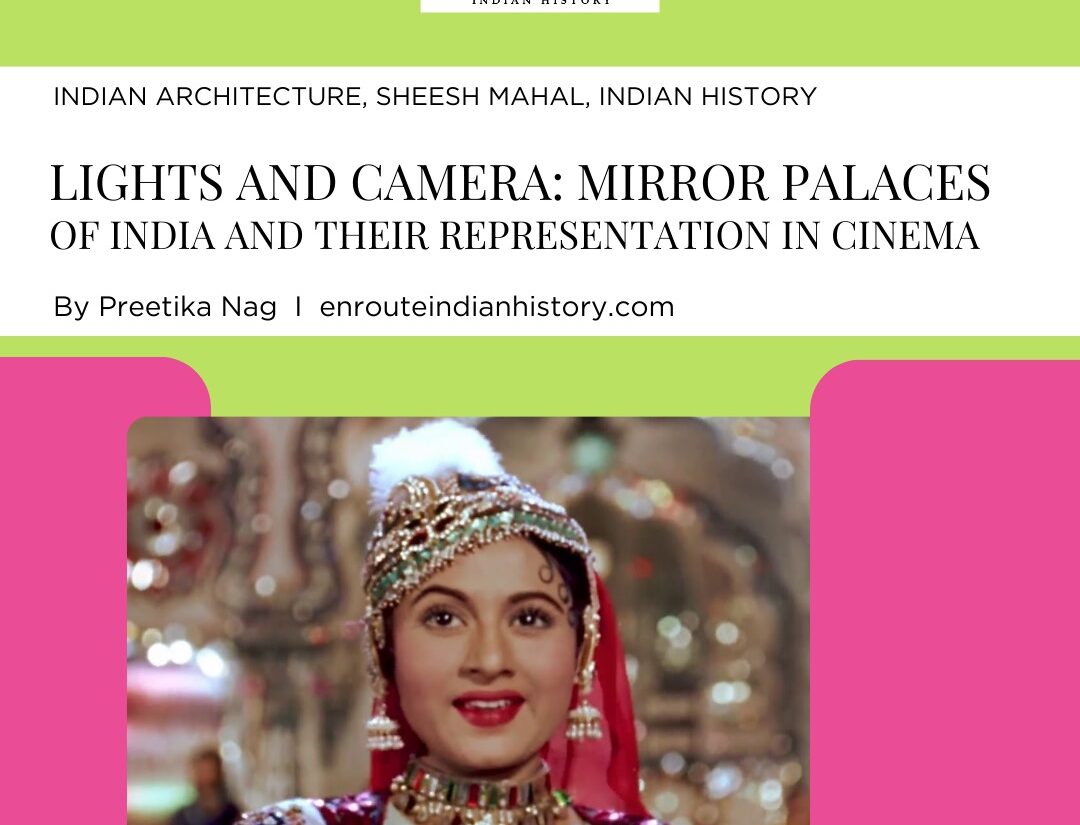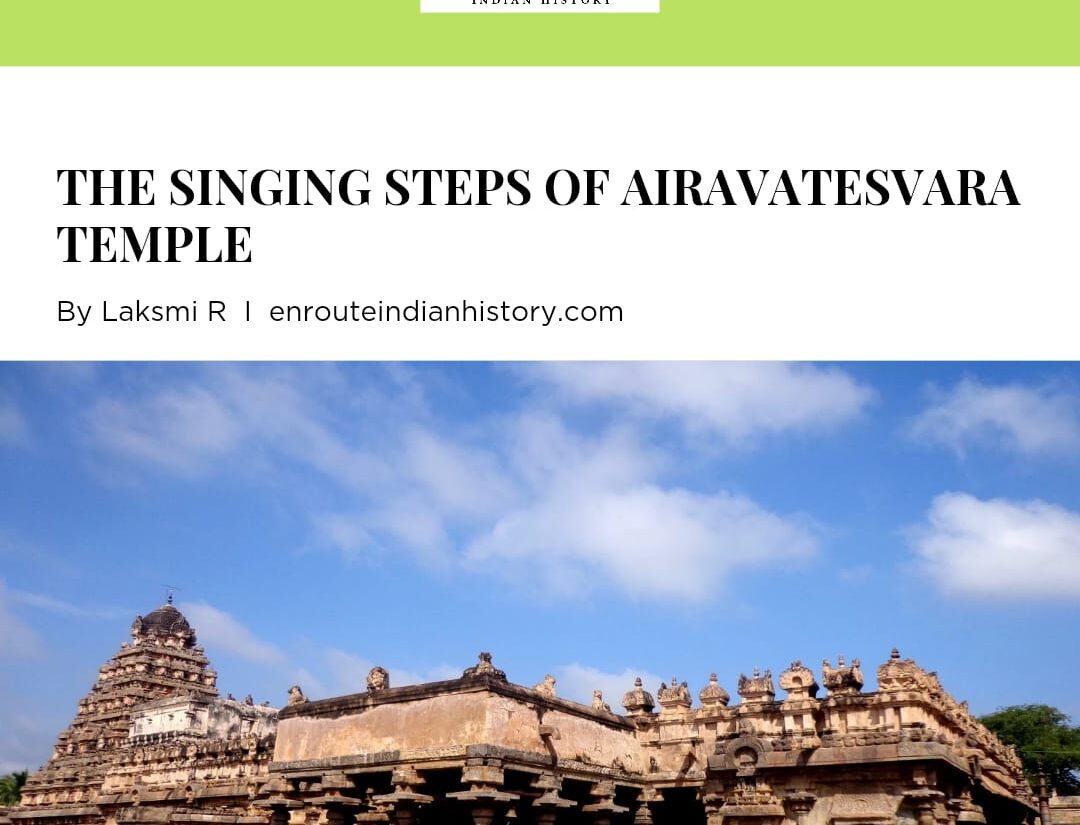Lights and Camera: Mirror Palaces of India and Their Representation in Cinema
- EIH User
- March 13, 2024

Architects today advise the use of mirrors and glass to expand the vision of a room by allowing in natural light or even using mirrors as a show of opulence and wealth in our interiors. However, the use of mirror work can be traced back to the medieval period in India when the Mughals adopted the unique and standout practice of including mirror work within the enclosures in a clever way to reflect light and show austerity in their palaces. This came to be known as ‘Aaina Kari’ i.e., the use of mirror tile work in the decoration of walls in monuments to show luxury. These specific structures came to be famously known as Sheesh Mahals and Aaina Mahals, literally translating to ‘Mirror Palaces.’ The basic idea of such structures was to use a mosaic of mirrors to reflect light magically to create the illusion of bright, big rooms with plenty of lighting and immense grandeur.

FIG.1. AAINA KARI IN INDIAN ARCHITECTURE
Source: https://in.pinterest.com/pin/72902087688498982/
The inspiration for the Mughals to construct their mirror palaces seems to have come during Akbar’s time from the Safavid rulers of Iran who were the first to use this technique in the construction of their buildings. The technique of Aaina Kari has rather economically conscientious origins rooted in the inclination of Iranian artists not to be wasteful and use imported mirrors from Europe that were broken during transportation. They cut these mirrors in geometric shapes and designs with precision to strategically place them on the interiors of any building to create a bright and elegant atmosphere. The first use of this Aaina Kari can be noted in 16th-century Iran under ruler Shah Tahmasp, subsequently gaining momentum with the migration of Persians to the subcontinent since the reign of Akbar.
SHEESH MAHALS OF INDIA
In the Indian subcontinent, the first evidence of Aaina Kari under the Mughals was found at the Sheesh Mahal or Shah Burj Apartments of Lahore Fort under the patronage of Shah Jahan where we see that mirror work mosaic is inlaid within white marble with gypsum stucco and gold tracings, as well as pietra dura which is the engraving of colorful semi-precious stones in wall decorations. Shah Jahan also commissioned a similar Sheesh Mahal at Agra where the path to Anguri Bagh was lined with small glass pieces to represent the mirrors used in the interiors as well. At Red Fort in Delhi, Aaina Kari was used in the Rang Mahal (color palace) where paint and mirror work were combined to decorate these private quarters, the Diwan-i-Khaas, as well as near the Nehr-i-Behisht (Canal of Paradise). The use of mirror work under Shah Jahan was mainly for the elite and private spaces with a focus on natural motifs of flowers which is evident across the three forts where he commissioned the work. The obsession with the outward showcasing of wealth and opulence in architecture reached its zenith under him and slowly trickled down to other regional entities over the years. The use of Aaina Kari’s glitter and bling to showcase the grandeur of architecture slowly was absorbed in regional architecture as well.

FIG. 2. SHEESH MAHAL AT LAHORE FORT, PAKISTAN
SOURCE: https://en.wikipedia.org/wiki/Sheesh_Mahal_%28Lahore_Fort%29
The Rajputs of Rajasthan were quick to adopt Aaina Kari in their architectural style. The Amber Fort in Jaipur built by Raja Man Singh in the 16th C has the splendid Sheesh Mahal which is a tourist attraction today and has intricate mirror work that reflects the sun rays to create a beautiful natural mosaic. There is also a similar Sheesh Mahal at the Nahargarh fort in Jaipur which is also a major tourist attraction today and consists of millions of colored glass pieces in decorative motifs. The Sheesh Mahal at Mehrangarh Fort at Jodhpur was once the private enclave of the ruler Ajit Singh of Marwar in the 18th Century and is resplendent with colored glasswork and mirror work of unique Rajput craftsmanship. Similarly, The City Palace of Udaipur known as Raj Mahal Palace also has a Sheesh Mahal built in the 18th C by Maharana Pratap for his beloved wife Maharani Ajabde. There is also the mirrored complex of Manak Mahal which was used for private audiences, and the Mor Chowk which was in the inner household sanctum of the palace adorned with colored glass peacocks and expansive Aaina Kari.

FIG.3. SHEESH MAHAL AT MEHRANGARH, JODHPUR
SOURCE: https://blogsgrassroutes.wordpress.com/2017/05/22/5-mirror-palaces-in-india-that-reflect-glorious-craftsmanship/
In the Bhuj area of Gujarat there is the Aaina Mahal constructed under the patronage of Rao Lajhpatji in the 18th Century where there is the famous ‘Magic Hall of Mirrors.’ The architect here created the perfect balance with mirror work and marble construction in a job that took him over a decade to complete. The Sikhs in the Northwest region of Punjab constructed the Hazuri Bagh Baradari which is the place of Maharaja Ranjit Singh’s Samadhi. Here, the Aaina Kari is combined with latticework, and relief work is typical of 19th Century Punjabi craftsmanship where motifs resembling that of Lahore Fort are found. There is another Sheesh Mahal in the Moti Bagh Palace compound at Patiala built by Maharaja Narendra Singh which is replete with floral designs and complex mirror work.

FIG.4.SHEESH MAHAL AT BHUJ, GUJARAT
SOURCE: https://blogsgrassroutes.wordpress.com/2017/05/22/5-mirror-palaces-in-india-that-reflect-glorious-craftsmanship/
These are a just a few examples of the Sheesh Mahals of India that showcase the unique handicraft of Aaina Kaari which began in Iran, traveled to the Mughal rulers and then trickled down to the regional empires where they adopted unique styles of their own.
THE SHEESH MAHAL IN CINEMA
The cinema has always been a vehicle for transmitting grandeur and larger-than-life scenarios. Apart from its dynamic scripts, Indian cinema is very well known for its cinematography which has been very effective over the ages in bringing fiction to a form of reality that is beautifully presented on the big screen. One major story-telling obsession of Indian cinema has been period dramas of Indian history that need the highest level of precision not only in the storytelling sincerity but also in the recreation of that time requires showcasing of grandeur and lavishness of the foregone rulers.

FIG. 5. THE SET OF THE SONG PYAAR KIYA TOH DARNA KYA’
SOURCE: https://m.rediff.com/movies/report/naushad/20080508.htm
The use of Aaina Kari in set designing for Indian cinema can be seen most evidently at first in the 1960 magnum opus Mughal-E-Azam when Madhubala portraying Anarkali is dancing on the famous melody of ‘Pyaar Kiya Toh Darna Kya’ in front of the entire court of Akbar. Many other pivotal scenes in this historical drama were shot amid Aaina Kari interiors to constantly elude to the lavishness of the time. The famous art director M.K. Syed built a replica of Lahore Sheesh Mahal for this movie which is engrained in the brainers of movie buffs till today. More recently, the work of Sanjay Leela Bhansali – Bajirao Mastani – showed the construction of the new Shanivarwada Palace with its unique feature being the Aaina Mahal that used millions of mirrors in the form of Aaina Kari that reflected so that reflection projected directly in the room of the queen. This is the same place where the famous song ‘Deewani Mastani’ starring Deepika Padukone is shot wonderfully where she embodied the role of the female protagonist Mastani dancing in front of the court of her beloved Peshwa Bajiro. These are mere examples where cinema has represented the lush and lavish medieval Indian History through its architectural marvels and strategies such as Aaina Kari.

FIG.6. AAINA MAHAL OF THE MOVIE BAJIRAO MASTANI
SOURCE: https://www.deccanchronicle.com/151103/entertainment-bollywood/article/sets-deewani-mastani-being-turned-museum
The use of mirror work till today has been a key feature of cinematic set design to showcase wealth and status, especially when referring to the medieval period of Indian history when this new technique adopted from the Persians and applied not only at the Mughal center but adopted across the Indian subcontinent by all big regional entities be it the Marathas or the Mewar rulers. The use mirrors in architecture was something that came as a breath of fresh air just because a few Iranian craftsmen weren’t willing to waste broken mirrors from Europe. Even today, the use of glass mirrors and colored glass in houses, in both urban and rural landscapes, is abundant and a sign of status and wealth.
REFERENCES:
- Https://Blogsgrassroutes.Wordpress.Com/2017/05/22/5-Mirror-Palaces-In-India-That-Reflect-Gloserious-Craftsmanship/
- Khan, Nadhra Shahbaz. “‘ayina-Kari’ In The Sheesh Mahal, Lahore Fort: Issues Of Attribution, Appreciation, And Interpretation.” Artibus Asiae, Vol. 78, No. 2, 2018, Pp. 181–222. Jstor, Http://Www.Jstor.Org/Stable/45049820. Accessed 10 Mar. 2024.
- Sepehri, Naeim. “Wisdom And Mystical Thoughts On The Mirror-Tiles Art In Safavid Architectural Space And Its Relationship With Sufism.” Ibda Jurnal Kajian Islam Dan Budaya. 19. 291-314. 10.24090/Ibda.V19i2.4659. (2021).
- Zaweed, Salim. “Rajput Architecture Of The Mewar From 13th To 18th Centuries.” Proceedings Of The Indian History Congress (2012).
- Https://Www.Scribd.Com/Presentation/541094184/Report-On-Mirrors
- Https://Gaatha.Org/Craft-Of-India/Aainakari-Mirror-Inlay-Craft-Udaipur/#:~:Text=It%20was%20an%20architectural%20ornament,The%20red%20fort%20in%20delhi.
- May 15, 2024
- 6 Min Read























